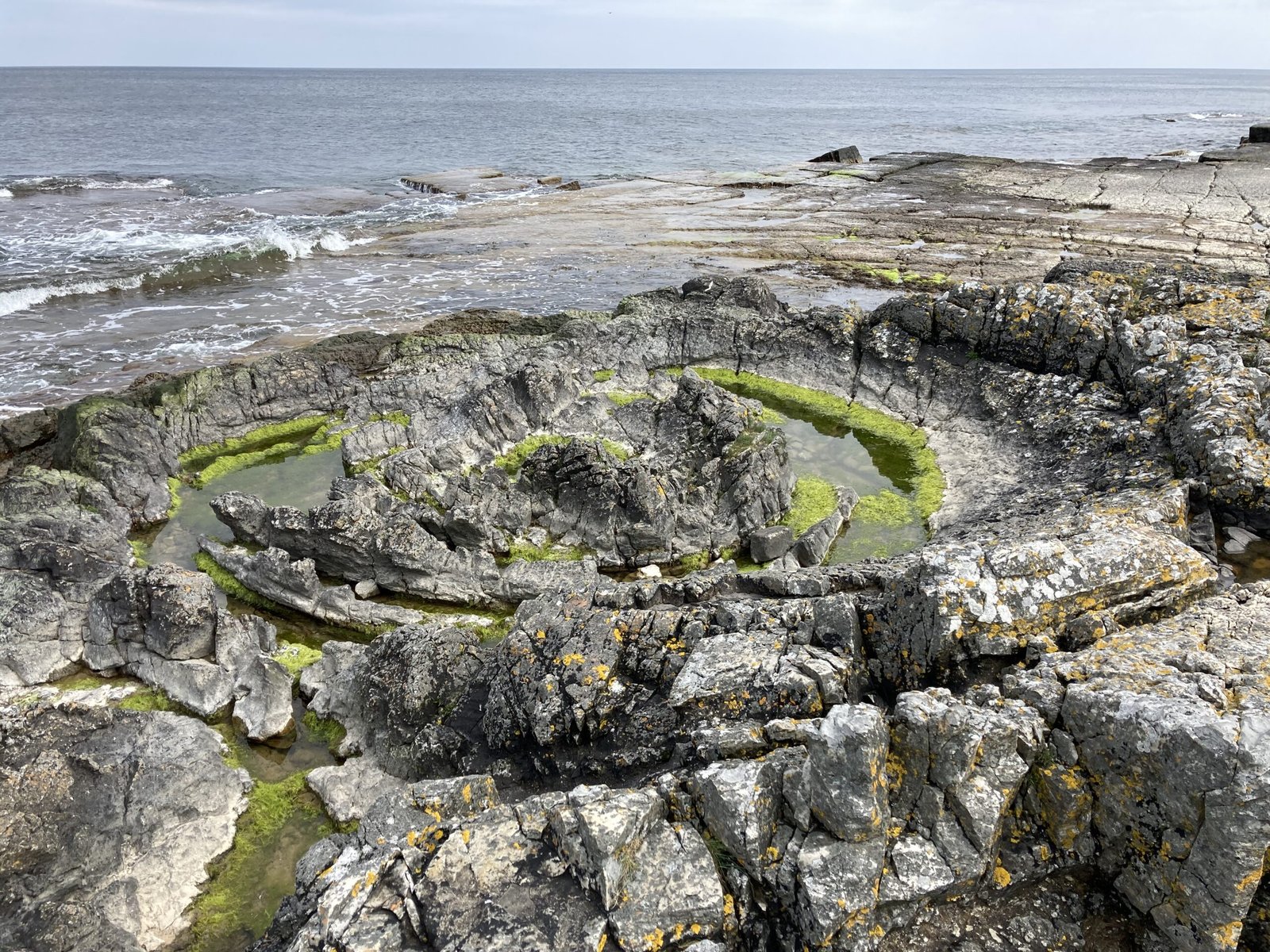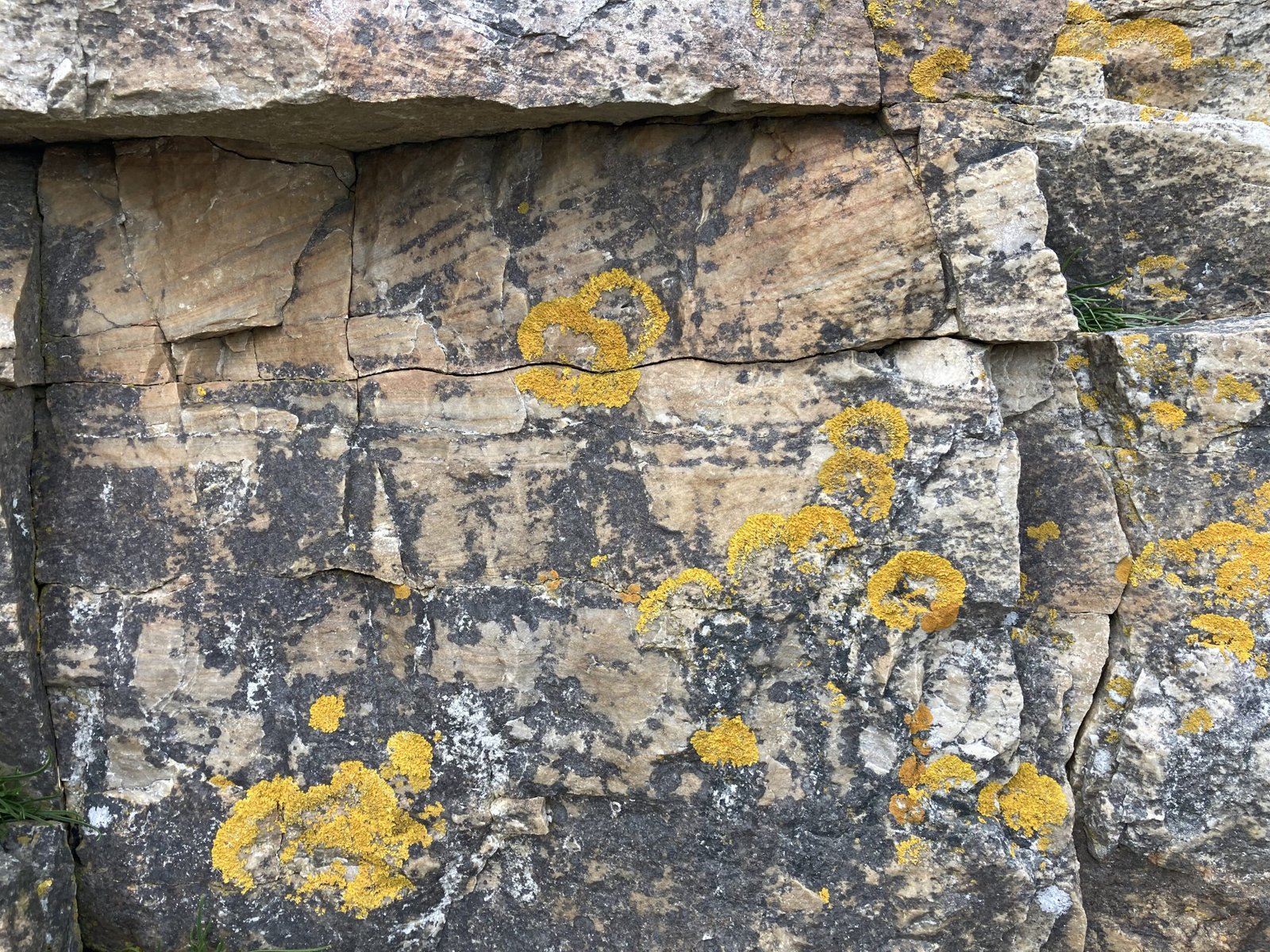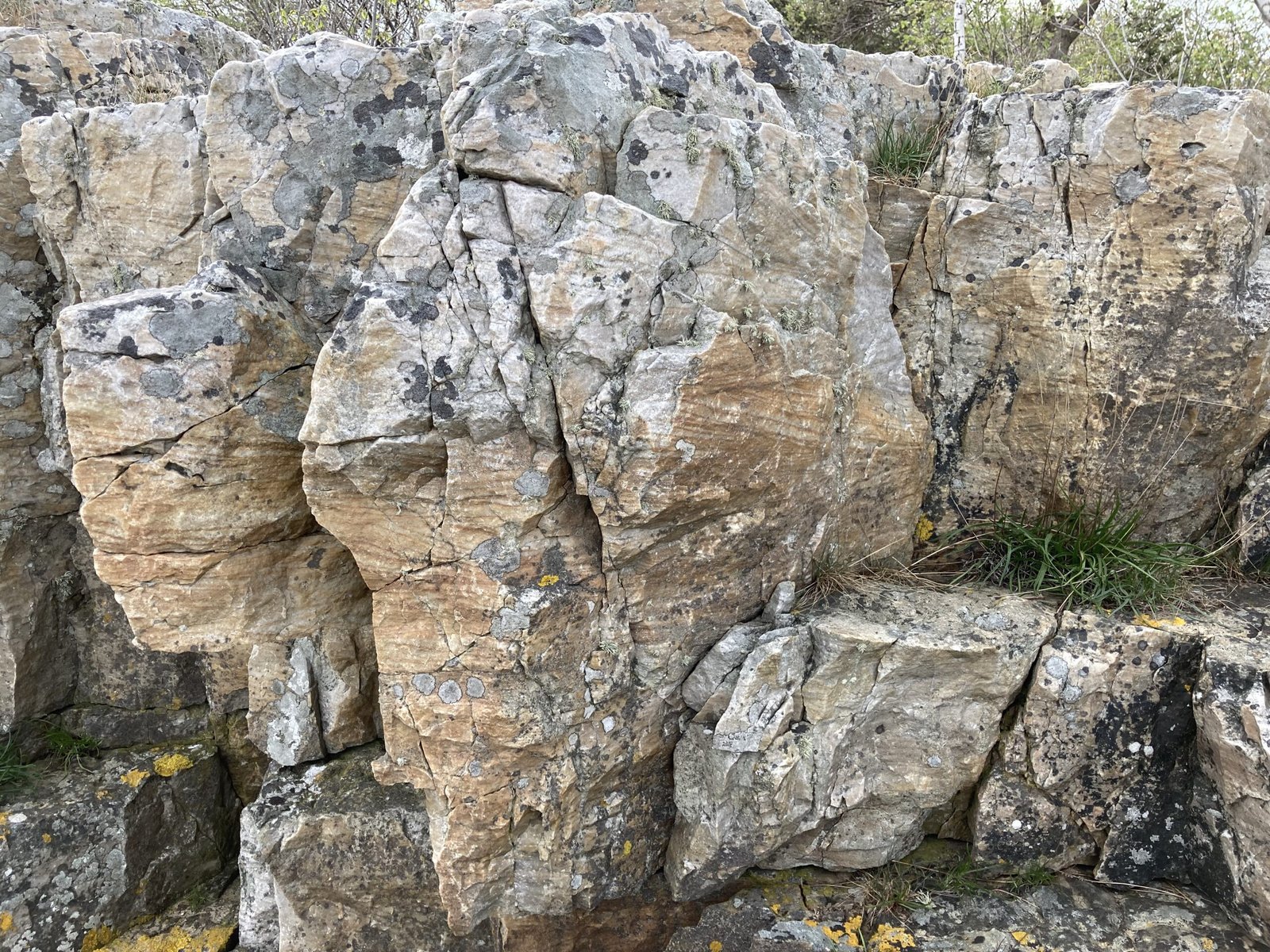Half a billion years ago, in the early Cambrian, some water, trapped in a sand bottom in a tropical sea, decided it wanted to get out. The water pushed its way up and out through the seabed, like a small volcano of water. Then, the sea bed collapsed into the void left by the escaping water. The sea bed collapse spread out in circles, and made a gentle, circular depression in the sea bed.
New sand covered the whole thing, and nothing happened for the next half a billion years, while the continent it sat on moved nearly two thirds the way to the North Pole. The ice ages scraped the rocks above away, and the old sand volcano found itself on the beach shore near the village Vik, in county Skåne in Sweden.

“The priest’s bathtub”; concentric circles around the central peak where the water escaped. The sand volcano disturbed the soft sand across a quite wide area; note the concentric circle fractures in the background.
Prästens Badkar, the locals call it, “the priest’s bathtub”. With its concentric circles, it reminds of a spa bubblebath, with a circle of seats, but bubblebaths were not invented when it got its name. And which priest that gave the name, if any, is lost in time.
Yours truly is, unsurprisingly, one of those who research the geology of any travel destination well in advance. I might even choose destinations partly based on geology, like the Canary Islands, Svalbard, the Dolomites or the English channel coast. Not this time.
We went to Österlen, the southernmost tip of Sweden, just because it is a very nice place. Gently rolling pasture hills, mile long white beaches, good food. Österlen is a place for the soul to relax and recharge, and it was our fourth time there. It was the real Änglamarken, the “Angel’s Fields”, in a movie with a song by the Swedish national poet Evert Taube. Sure, I confess to have looked at the geological map, but with the rocks mostly beneath the pasture, I took a stoic attitude towards the geology, and concentrated on family and la dolce vita.
But, how long was my better half in geology-free paradise? The title Upptäck förhistoriska Skåne: 18 spektakulära utflyktstips – från vulkaner till dinosaurier showed up in a book store. Discover prehistoric Skåne: 18 places to go, from volcanoes to dinosaurs. Yes, Skåne has both old volcanoes and even older dinosaur fossils, dating from the Cretaceous and latest Triassic, respectively. But those were not at family friendly driving distance. The Bathtub was, at one of the spots of the coastline actually made by rocks.
The sand volcano sits on a small cliff, just at the shoreline. Surrounding it are white-greyish sandstones, compacted and tight from being pushed down and up again through the last half a billion years, but with distinct sediment layers. The rocks tell quite a lot about the environment they were laid down in: Looking closer, we can see the crossbeds, thin dipping beds within the larger beds, where sand was deposited by tides going back and forth.

Close-up pf the crossbeds, here dipping to the left. This was clearly an environment with currents going back and forth.
The sand deposition was not continuous, rather it was on-and-off with deposition and calm periods. During the calm periods, life established on the sea floor, and creepy crawlies buried in the sediments. Such calm surfaces make distinct horizons, often exposed, where the old burial tubes make a crisscrossing pattern.

The white greyish surface in the foreground is crisscrossed by the “crow tracks” bioturbation, showing that it was a calm period without sedimentation. When sediment deposition started again, the grey-black sands covered them.
The sandstone at Vik belongs to a widespread sandstone, named the Hardeberga Formation. In geologese, a formation is an interval of the rock pile, with similar rocks, typically deposited in a similar environment and which usually can be traced and correlated across some area. Formations typically get their names from a place, like Hardeberga near Lund, and the Hardeberga Formation stretches across Skåne and also Bornholm. From its position in the rock pile – its stratigraphic position in geologese – we know that it is from the early part of the Cambrian, around 540 to 520 million years ago.
There are several sand volcanoes in the Vik area, but not as accessible as the Priest’s bathtub. It seems the once tropical paradise must have been struck by earthquakes, which shaked the sand and mobilised the water. The result froze in time – until erosion uncovered it, half a billion years later.
How to get there:
The nearest major airport is Copenhagen, with direct flights from most of Europe and also intercontinental.
Take the train from Copenhagen across the Øresund Bridge – a marvel of engineering! – to Malmö.
In Malmö, change for train to Simrishamn, from where you need to take a bus to Vik.
Malmö also has an airport, but mainly with flights intra-Sweden and to tourist destinations. The airport does not have a rail connection, but bus services to Malmö.
Alternatively, rent a car at the airport or in Malmö or Ystad, and drive. Just type “Prästens badkar” (or “prastens badkar” of you are short on Scandiavian letters) into Google and you have the road. The site itself is well signposted from the free parking space.



